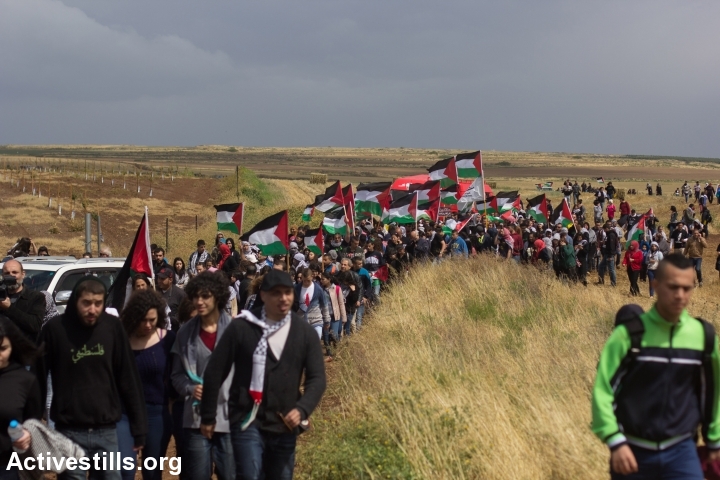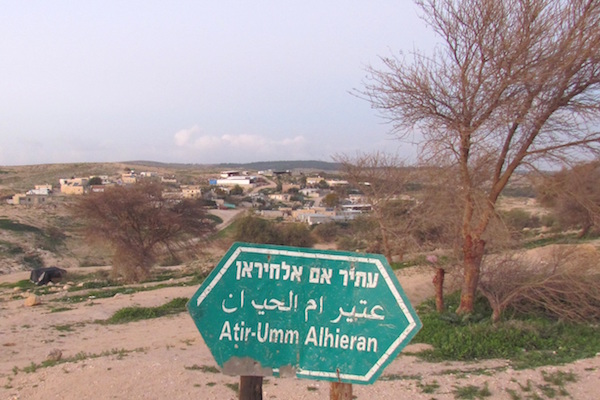It’s 2015 and Israeli peace groups still refuse to talk about the mass dispossession of Palestinians in 1948, including those who became Israeli citizens. Tom Mehager says it is time for a real conversation about the right of return.
By Tom Mehager

Israeli non-profit organizations that strive for a society based on coexistence most often focus on the most pressing issues vis-a-vis Jewish-Arab relations: educating toward democratic values, mutual recognition and teaching the Arabic language; equal allocation of resources and land; integration into the workforce and strengthening economic investment in Arab towns and villages; proper representation in decision-making processes; legitimacy for Arabic in the public sphere; changing state symbols, and more. In this respect, these organizations are making important conversations.
But what those same organizations, which demand equality between Jews and Arabs, do not speak about or deal with is the right of return of Palestinian refugees to their homeland. 1948 is the elephant standing in the center of the room. Many of our Palestinian colleagues in these organizations come from families who were uprooted from their homeland, with much of their nation still living in the diaspora.
I do not want to speak in the name of Palestinians and claim that they want to open up a conversation with us, Jewish Israelis, about the right of return. But I do want to ask why it is that we never raise questions about 1948 when speaking of a life of coexistence or about our vision of equality.
Jews realized and continue to realize their right of return in the wake of several historic events: most of us are here after 2,000 years of exile, as per the Zionist movement’s definition, due to the Law of Return, which allows the Jews of the world to receive Israeli citizenship. Moreover, many young Israelis who are the grandchildren of the victims of World War II have obtained citizenship in their grandparents’ countries of origin in Europe. And let’s not forget that the government of Spain has announced that it will allow the descendants of the victims of the expulsions in the 15th century to apply for Spanish citizenship. Thus, if we believe in true equality between Jews and Arabs, we must support the right of return for Palestinians to their homeland.
In reality, however, these organizations that strive for integration and equality remain silent when it comes to the privileges that Jews enjoy when it comes to immigration to Israel. The ruling by Aharon Barak, the former President of the Supreme Court of Israel, in the appeal by Adal Kaadan and the Association of Civil Rights in Israel (ACRI) against the Israel Land Administration is a clear example of this (Kaadan tried for years to build a home in the Jewish town of Katzir. His request was denied by Katzir’s admissions committee.)
On the one hand, when it comes to organizations working toward coexistence, the ruling represents an important moment in the relationship between the Jewish majority and the Arab minority, since Barak enshrined the principle of equality and the obligation of the state to treat all citizens equally as constitutional ones. Moreover, at the center of the appeal was the issue of housing and segregation between Jews and Arabs in Israel, and Barak’s ruling against segregation only strengthened the vision of coexistence in this land.
Unfortunately, the High Court of Justice rejected a petition against the Admissions Committees Law, which allows admissions committees in hundreds of communities in Israel to reject housing applicants based on their “social suitability.” Thus, the court ruled that the same mechanism that forbade the Kaadan family from living in the town of Katzir is legal.

On the other hand, Barak made sure to mention twice in his ruling that the Law of Return is not being questioned. The first time is when he writes that ACRI itself is not calling the Jewishness of the state into question. The second time is when he mentions the Law of Return, specifically when he states that the key to entering Israel is solely in the hands of Jews, which suits the definition of the state. It is important to notice that Barak, knowingly or unknowingly, chose to use one of the most prominent Palestinian symbols of return to the homeland — the key.
The model for a life of coexistence that stems from Barak’s ruling both suits the agenda of most of these Israeli NGOs and demarcates the borders of the conversation: full equality must be granted to all those inside Israel, but when it comes to the history of Palestinian refugees and the collective rights that Jews enjoy at the expense of those refugees, there is nothing to talk about.
In my eyes, this dynamic is not in line with the desire to live in a country based on coexistence and full citizenship. It is obvious that the vast majority of Palestinian citizens in Israel opposes it. After all, why should a Palestinian citizen pay taxes to a state that invests much of its resources in bringing in new Jewish immigrants, while it rejects her and her family’s right to return? The State of Israel, which disconnects the Palestinian minority from its wider political community and prevents it from realizing their identity and history, grants every Jew in the world the opportunity to do just that.
The explanation for ignoring the right of return lies, I believe, in the political roots of the Jewish Left in Israel, and specifically those who founded the organizations that strive for coexistence and civil rights. Those founders are the ideological descendants of the same political and ethnic group that is viewed in Israeli politics as “left wing,” despite being bearing a great deal of responsibility for the Nakba — both during and after the 1948 War — when they blocked the return of Palestinian refugees and settled on their land. Between the Jewish “founders’ generation” of 1948 and the organizations of today came those same groups that spoke of “coexistence,” but established that there are some things that are to be excluded from the political discourse between Jews and Palestinian citizens, among them the Nakba.
It is important to notice that this comes up in the Kaadan ruling, and in Barak’s agreement with the appellants:
“This appeal is primarily intended for future purposes. The appellants do not intend to criticize the long-standing policy, according to which settlements — kibbutzim, moshavim and mitzpim — were established across the country (with the aid of settlement institutions) and have and continue to be almost entirely populated by Jews (emphasis mine, T.M.). The appellants do not focus their complaints on the legitimacy of the policy that has prevailed vis-a-vis this issue in the period before the establishment of the state and during the years after its establishment. Furthermore, they do not undermine the crucial role played by the Jewish Agency in settling Jews across the country during this century.”
Here’s a relevant example: the Supreme Court ruled just two weeks that the state’s plan to expel the residents of Atir/Um al-Hiran and establish a Jewish town (named “Hiran”) in its place, is legal. Today, Kibbutz Shoval sits atop the land that once belonged to the tribe, which was expelled from its land in 1948.
As a Mizrahi activist, this dynamic upsets me, since it places the blame squarely on the public that I come from, while ignoring the political roots of the state and the circumstances of its establishment. We saw an example of this in Shatil’s anti-racism campaign: from the campaign, one gleans that the average Israeli racist is a dark-skinned, Mizrahi man who wears Star of David necklaces around his neck and wears “Lehava” (a far-right, anti-miscegenation organization in Israel) shirts.
On the other hand, the man who seeks coexistence is white and Ashkenazi. One must ask whether a kibbutz that sits atop Palestinian land and that accepts very few Mizrahim or Palestinians is not an expression of racism, and are inconsistent with the principles of coexistence. The aforementioned appeal and the subsequent decision by Barak chooses to ignore this question.
Thus, in its current form, the Jewish Left — made up mostly of Ashkenazi activists — gains twice from this political dynamic. On the one hand, the Ashkenazi Left is viewed as an enlightened public that strives for peace and coexistence. On the other hand, the same “Left” decides the boundaries of the discourse in such a way that suits the historical and current interests of the ethnic group that makes it up. In Jerusalem. for example, Jews from the Israeli elite live in the neighborhoods that used to be populated by Palestinians and in homes that once belonged to Palestinians. However, they will refrain from mentioning this fact, and will intentionally talk about Pisgat Ze’ev or Har Homa as settlements that impede peace.
A brave and honest attempt by all sides involved to form a collective understanding of the roots of the conflict is one of the critical steps on the way to reconciliation. The wholesale denial of 1948 as a critical event in the history of the Israeli-Palestinian conflict, especially among those who are working toward equality and coexistence, teaches us about the need for a real conversation about the Palestinian Nakba.
Tom Mehager previously worked for Physicians for Human Rights, Worker’s Hotline and The Abraham Fund Initiatives. Today he works for Adalah – The Legal Center for Arab Minority Rights in Israel. This article was first published in Hebrew on Haokets.



